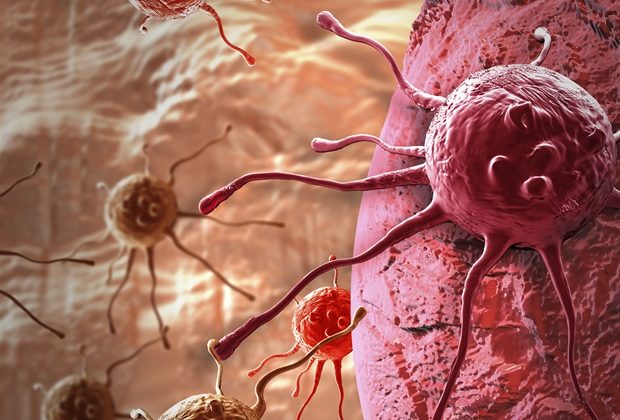Hydrogen sulfide is usually a highly toxic gas. However, with careful preparation, it can be used to support photothermal therapy (PTT) in treating cancer, as a team of researchers reporting in the journal Angewandte Chemie has recently discovered. As the team reports, an adjuvant releasing hydrogen sulfide causes tumor cells to lose their natural heat protection and thus to become significantly more sensitive to PTT.
Breathing in gaseous hydrogen sulfide usually causes us to suffocate, because the gas suppresses the respiratory chain in the mitochondria, the power houses of the cells. However, molecular hydrogen sulfide, when delivered in small amounts to cells, is not entirely toxic. Instead, it also acts as a messenger molecule and plays a role in cancer cell growth. With this in mind, a team of researchers working with Xiaoyuan (Shawn) Chen of the National University of Singapore, focused on the effects of hydrogen sulfide in the heat protection mechanisms of tumor cells.
The team chose this angle because tumor cells have the ability to protect themselves against excessive heat. In essence, the aim of photothermal therapy is to "boil" cancer cells from the inside out. To reach the required temperatures, a photosensitizer introduced into the cells converts incoming laser light into heat. However, tumor cells respond to this heat attack by increasing production of heat shock proteins (HSP), reducing the efficacy of the treatment.
To make their HSPs, however, the cell needs energy equivalents produced in the mitochondrial respiratory chain, and it is here that Chen and the team intervened. They discovered that hydrogen sulfide, when released into tumor cells in appropriate amounts, disrupts mitochondrial respiration, suppresses HSP production, and makes it more difficult for tumor cells to protect themselves. As a hydrogen sulfide donor, the team chose FDA-approved anethole trithione-;a drug originally used as a treatment for dry mouth and to stimulate bile secretion, but also known for its ability to continually release hydrogen sulfide when broken down in the cell.
To complete photothermal therapy, the team coupled an anethole trithione derivative with copper sulfide nanodiscs, which are used in PTT as a photosensitizer to efficiently convert near-infrared light into heat. A single-dose treatment led to the eradication of tumors in laboratory mice, which had been previously implanted with breast tumors, within only a few days. Chen and the team also found that they could perform the PTT at lower temperatures using the adjuvant–photosensitizer combination, limiting damage to surrounding healthy tissue. The authors suggest using this energy remodeling approach using hydrogen sulfide donor adjuvants as a more general approach to effective PTT.
Wiley
Cheng, J., et al. (2023) Gas-Mediated Tumor Energy Remodeling for Sensitizing Mild Photothermal Therapy. Angewandte Chemie International Edition. doi.org/10.1002/anie.202304312.
Posted in: Medical Science News | Medical Research News | Medical Condition News
Tags: Bile, Breathing, Cancer, Cell, Copper, Diagnostics, Drug Delivery, Efficacy, Gene, heat, Laboratory, Medicine, Mitochondria, Molecule, Nanomedicine, Research, Respiratory, Technology, Therapeutics, Tumor
Source: Read Full Article
